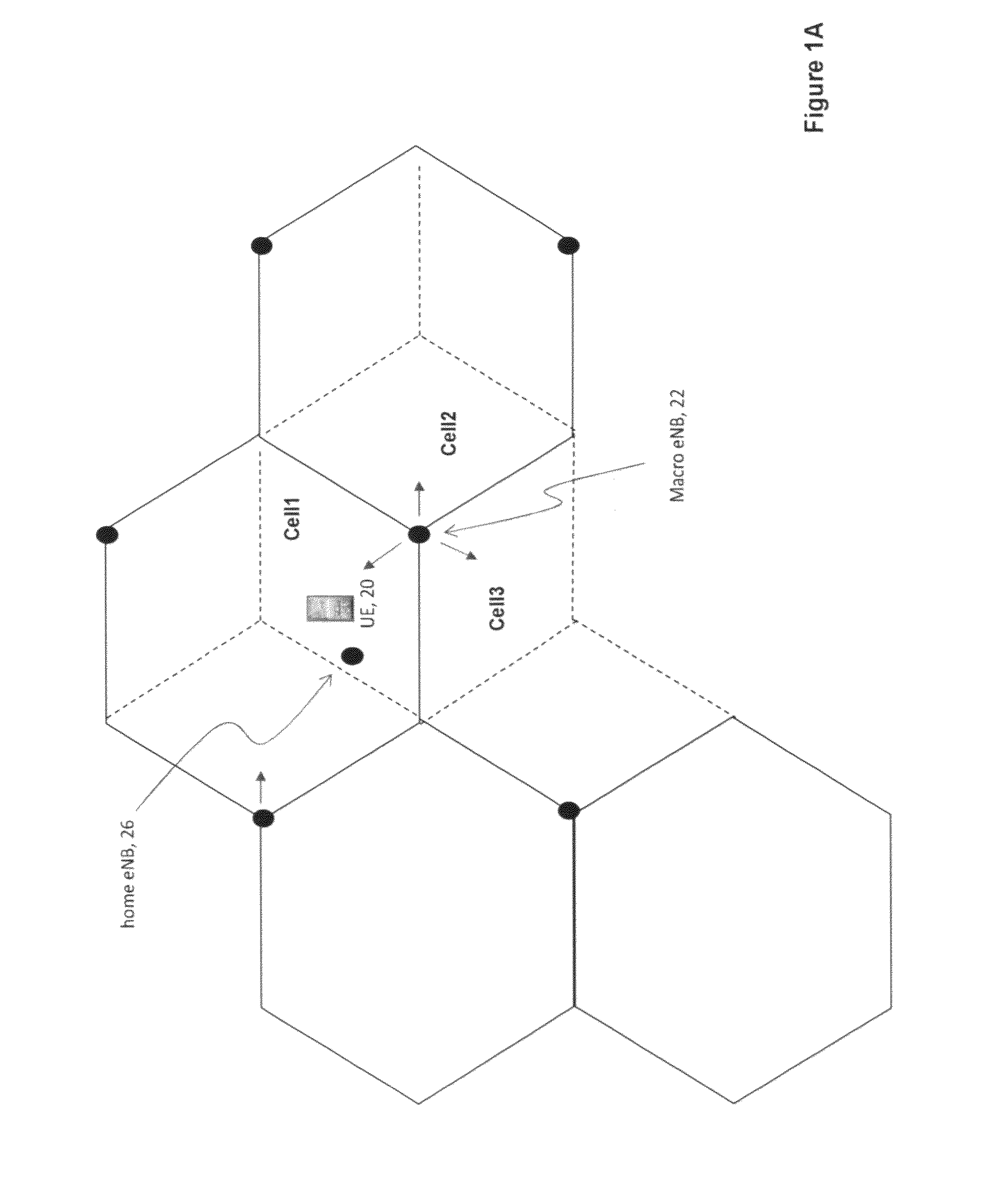Frequency hopping in license-exempt/shared bands
a technology of license-exempt/shared bands and frequency hopping, applied in the field of wireless communication systems, can solve problems such as challenging interference scenarios in heterogeneous radio environments
- Summary
- Abstract
- Description
- Claims
- Application Information
AI Technical Summary
Benefits of technology
Problems solved by technology
Method used
Image
Examples
Embodiment Construction
[0027]Unlike segregating component carriers and CSMA / CA techniques noted in the background section above, embodiments of these teachings mitigate interference by frequency hopping. Of course, frequency hopping can be used in addition to CC segregation and / or CSMA / CA. The examples below are in the non-limiting context of an LTE system, and as will be detailed there the LTE transmissions use frequency agility to minimize interference to co-existing WiFi systems on license-exempt bands. The parameters of such transmission may be optimized based on measurements of co-existing WiFi system(s).
[0028]Frequency hopping has been used in GSM systems on the cellular band, including related concepts such as dynamic channel allocation (DCA) with FH pattern adaptation and dynamic frequency hopping using slow FH and modifying the utilized frequency-hop patterns based on rapid frequency quality measurements [see for example FUNDAMENTALS OF DYNAMIC FREQUENCY HOPPING IN CELLULAR SYSTEMS, by Zoran Kost...
PUM
 Login to View More
Login to View More Abstract
Description
Claims
Application Information
 Login to View More
Login to View More - R&D
- Intellectual Property
- Life Sciences
- Materials
- Tech Scout
- Unparalleled Data Quality
- Higher Quality Content
- 60% Fewer Hallucinations
Browse by: Latest US Patents, China's latest patents, Technical Efficacy Thesaurus, Application Domain, Technology Topic, Popular Technical Reports.
© 2025 PatSnap. All rights reserved.Legal|Privacy policy|Modern Slavery Act Transparency Statement|Sitemap|About US| Contact US: help@patsnap.com



